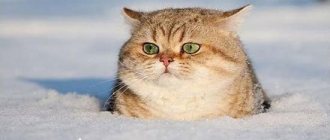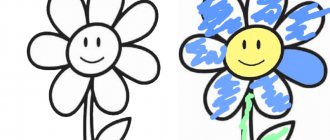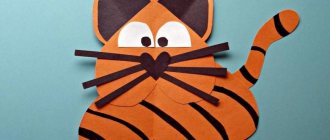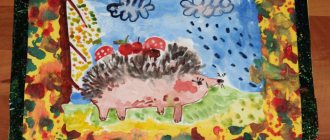How to draw lilac? Tips for beginning artists:
Flowering lilac bushes decorate courtyards, summer cottages and parks in late spring, spreading a subtle and delicate aroma around them. When lilacs bloom, it seems that even the air is filled with its wonderful mood.
Fragrant and fluffy inflorescences, consisting of tightly fitting small flowers, never cease to amaze with their beauty. Poets have always praised the “lilac beauty” in their poems. Quite a lot of artists have depicted this spring flower.
We will tell you how to draw lilacs simply and beautifully. Let's try?
How to draw lilac: step by step for beginners
- Be patient, and the amazing world of art will open before you.
- Today you will “touch” a very popular topic in painting and also learn how to draw a lilac with a pencil.
- Initially, you need to create the shape or base of the lilac branch.
Next, draw flowers, leaves and other details.
Next, we will tell you how to draw a lilac with a pencil step by step. For beginner children, you can simplify this technique:
- Step 1. Mark the future shape of the inflorescence in the center of your leaf. It should somewhat resemble a triangle. Draw several large leaves from it below. And from under them there should be a thin stem peeking out.
- Step 2. Give your leaves a shape: outline with a smooth, curved line and draw a sharp tip, indicating the axis. Draw the stem, or rather the branch itself. Outline the inflorescence with a barely noticeable but very sinuous outline without corners.
- Step 3. Inside the main shape, draw small flowers with four petals and a quadrangular middle. Perhaps there is a flower with five petals lost somewhere.
- Step 4. Continue filling in the empty spaces with small flowers. Their density and location may vary. It is necessary to draw characteristic veins on the lilac leaves.
- Step 5. Do shading in the voids and on the leaves between the flowers.
What do you need?
To work you will need:
- A thick white sheet of paper (from a regular notebook or landscape paper to designer parchment).
- A well-sharpened simple pencil.
- Eraser.
- Any convenient work surface: folder, table, book.
- Colour pencils.
Drawing a “May flower”
Now you will learn how to draw a lilac step by step. For beginners, this will be easiest to do with a pencil. This lesson is quite easy, even a child can handle it.
How to draw lilac
How to draw lilacs step by step
With a simple pencil I outline the direction of the branches and leaves. Ehhh, that was the simplest thing.
Then I refine the shape and size of the leaves.
But now you have to plow. What to paint with? Come on, watercolor pencils, felt-tip pens, markers, gel pens - TO ME! I start with the leaves. Firstly, they are large, I’ll warm up on them, and then my hand will move confidently. The warm-up took a long time: the leaves were dark. Very dark. No matter how much I darken it, the tone is still insufficient. But the colors are also very complex.
When I walked home with this branch, I remembered the methods of teaching painting. I don’t know how it is now, but 10 years ago in kindergartens they easily gave children red, blue and yellow gouache and - go ahead, children, create a picture of the world by mixing the three main colors! I can’t imagine how they got out there.
And now I’m anxiously examining my stocks of yellow-green, beige-green, grass-green, malachite, turquoise, pistachio, olive and salad pencils and markers and thinking: not enough!
Little variety. And this despite the fact that I don’t like working with color. I paint only when necessary and try to draw simply. I just draw what I see. Ah, comrades! - how we teach children!
In kindergartens, often all they need is a set of pencils in six colors. Red, yellow, blue, cyan, green, black. ALL. This is certainly more than three. Well, children paint the bark of trees black and the crown green. Everything is clear, clear and unambiguous.
So, now I have lilac leaves FROM NATURE. You will have to mix and cover in many layers. In general, stop focusing on the leaves - we have a lot of very colorful flowers. Where do we start?
I draw the shape of several flowers - it turns out very stupid. Let's start with the buds and green twigs that shine through in the depths of the inflorescences. So, now the general lilac tone of the inflorescences is done with a purple watercolor pencil. But we have these flowers against the background of dark leaves, and now we have to honestly depict this dark background between the flowers and buds.
Drawing "Lilac"
Tasks:
Educational:
Continue to teach children to create an artistic, expressive image of a still life.
Teach children to understand the genre features of still life.
Learn to look at a picture, highlighting the means of expression used by the artist.
Learn to draw lush lilac inflorescences using an unconventional drawing technique, poking with crumpled paper.
Teach children to convey the characteristic features of lilac flowers using the technique of applying paint in several layers (each next layer is lighter than the previous one)
Strengthen compositional skills to see perspective, near, middle and long-range in works of art.
Educational:
Develop creativity, imagination, color perception, sense of composition. Develop skills in mixing paints to obtain the desired shade.
Create conditions for free experimentation with various art materials and tools.
Arouse interest in independent search and selection of visual and expressive means.
Educational:
To cultivate an aesthetic attitude towards the environment and its reflection in drawings.
Cultivate accuracy in work and aesthetic taste.
Preliminary work
Conversation on the topic: “What is still life?” “What is nature?” "Different genres of painting"
Examination of reproductions and illustrations of still lifes.
Toning sheets of paper.
Reading stories and poems about flowers and vegetables.
Drawing still lifes with plasticine, fingers, wax crayons.
Creating still lifes using the cut-out appliqué technique.
"Word Game", "Make a Story"
Visit to the Rainbow Exhibition and Convention Center.
D/i “Assemble a still life”, “Still life puzzles”
Material, equipment, tools
Gouache, squirrel brushes No. 4.8, foam rubber stamps, 2 cans of water, 2 buckets for water, cups for brushes, rags, wet wipes, tinted and white A3 sheets, cotton swabs, crumpled paper.
Reproductions of paintings (still lifes) by Levitan “White Lilac”, “Dandelions”, Konchalovsky “Lilac and Three Lemons”, easels, a CD with spring music, a computer, a projector, magnets, children’s drawings with still lifes.
Contents of GCD.
The group received a letter of invitation with an offer to visit the magical world of flowers. Where you can learn a lot of interesting things and show creativity.
Children enter the hall. Guys, here we are in our workshop. Please come to me, do you like to draw? (children's answers) This is a pleasant, interesting and useful activity. Of course, sometimes it's not easy. But when the drawing is ready, you are very happy. So? (Pay attention to children's work)
And everyone who looks at your drawings praises you and is also happy. Because people are always happy about beautiful things!
—What do you think nature can paint?
Yes, nature also loves to pamper people with its colors. Only the album sheet is not enough for her. She draws on trees, grass, sky, clouds, clouds, water.
— What colors does nature like to use?
— What do you consider the most beautiful thing that nature creates? (Flowers)
Yes, flowers are beautiful and amazing creations of nature; when you see them you can’t pass by, you want to stop and admire. How can you preserve wonderful moments? Share your impressions of what you saw. (You can take a photo, shoot a video, write a poem, embroider with threads, beads, write music.) and of course, draw.
Many artists love to paint nature, why do you think? There are some artists who paint flowers. Artists transfer the beauty of flowers into paintings, and everyone who sees these paintings can admire them.
— I suggest you admire the artist’s paintings\
-Do you like these pictures? How?
-What did the artist depict on them? (Jug, vase, flowers)
-What is the name of the genre of painting where the artist paints dishes, fruits, vegetables, flowers, and everyday life? (Still life)
-What colors are the works done in?
-Guys, please tell me what colors the artist used to create the image of lilac... (conversation specifically based on the painting)
-What is the name of this artist? (Give last names)
You and I also painted still lifes with flowers, do you want to remember? (Show on screen)
-Let's remind you what drawing techniques we used to create this beauty? (Fingers, balls, foam stamps, brush and cotton swabs)
- Guys, do you think it’s possible to draw and create a still life with lilacs without a brush?
-Can you imagine it’s possible! When I saw this method, I decided to show it to you.
-Look (children go to the table) I’m drawing a vase from the bottom of the sheet. It can be anything, your imagination will help you here. But to depict lilacs, we need simple paper, I crumple it and start with the darkest color, carefully dip it into the paint and begin to apply it to a sheet of paper, leaving an oval-shaped imprint, then another color and the lightest white. I finish drawing the leaves and the table. So simple and beautiful.
Before you start creating your still lifes, think about what material you will need to decorate the vase. Prepare everything you need and start creating your still lifes with lilacs.
Let's finish the job!
-What did we create?
-What material did you use to create your images?
We learned a lot of new and interesting things, and our works will remain as memories for us.
MAGAZINE Preschooler.RF
Notes on drawing in the middle group of kindergarten: “Lilacs in a vase”Program content:
- Introduce the concept of still life;
- Teach children to draw beautiful flowers, use a variety of shaping movements, working with the whole brush and its end;
- Teach children to use a signet;
- Help children convey the plot by placing the image on the entire sheet;
- Strengthen the ability to hold a brush correctly, rinse it well and dry it;
- Develop the ability to mix paints to obtain new colors and shades;
- Strengthen the ability to cleanly rinse a brush before using paint of a different color;
- Intensify the use of names of colors and their parts in speech;
- Develop aesthetic feelings, a sense of rhythm. Cultivate a sense of beauty, a desire to please loved ones.
Previous work
Examination of reproductions depicting beautiful flowers in a vase A. A. Chetverikov “Lilac” , Konchalovsky P. P. “Lilac” , I. F. Khrutsky “Flowers and Fruits” ,
Materials for children
Landscape sheet A 4; paint - gouache; brush, jar of water, napkin, signet (napkin roll)
Progress of activities
The teacher addresses the children: Guys, I want to tell you a riddle.
The snow is melting,
The meadow came to life
The day is coming
When does this happen? (Spring)
- Spring came. There is still snow outside, the sun is shining warmer and brighter. All nature has come to life and will soon delight us with beautiful flowers. Today we will draw lilacs in a vase. — I'll show you how to draw flowers in a vase. First I will draw a vase. What shapes do vases come in? (round, rectangular, oval, low, high). Guys, please note that the vase must be up to the middle of the leaf, otherwise the flowers will not fit. Now I will draw flowers, for this we take a sleeve, dip it in paint and make prints. These will be our flowers, and from them we will draw stems and leaves into the vase with a brush. Let's remember the rules of painting with paint. The brush should be held between three fingers, behind the iron tip, without squeezing tightly with your fingers. Get to work (children draw a vase of flowers to the music).
I provide individual work: partial demonstration of drawing techniques; approval, praise, verbal encouragement; if necessary, I use the technique of drawing with a child’s hand on a draft; individually with Vova, Sasha, Katya, Misha
- Let's play a little now. Physical education minute.
Our scarlet flowers. Our scarlet flowers
The petals are blooming. The petals close.
The breeze breathes a little - they shake their heads,
The petals are swaying. They fall asleep quietly.
The teacher lays out all the finished work on the table and examines it together with the children.
— What beautiful flowers you drew. (The teacher talks with the children, asking questions).
| Next > |




